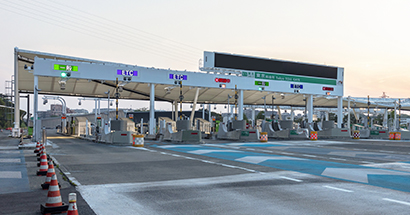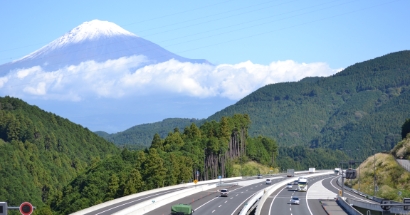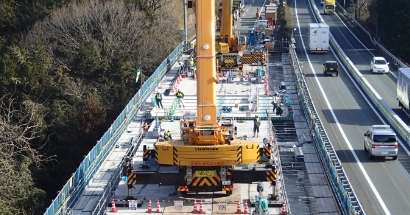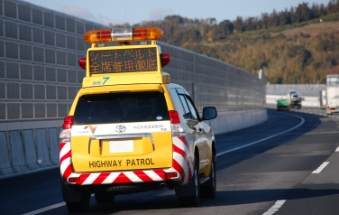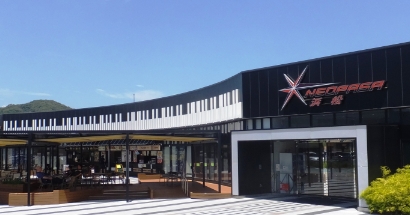Important Notice
An earthquake has come!
If you feel an earthquake while driving
- never Do not apply sudden braking Please Slow down slowly and do not panic Stop on the left shoulder And stop the engine.
- Under long slopes and near tunnel entrances, depending on the seismic intensity, there is a risk of collapse, so stop as far as possible.
- Expressway Closed when the measured seismic intensity 4.5 (equivalent to less than 5) And check the road.
- In the event of a major earthquake, emergency vehicles will pass on the main road.
- If you encounter a strong earthquake at the rest facility, follow the evacuation guidance of the staff.
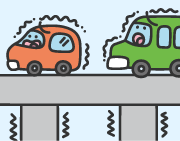
earthquake early warning is received
Since October 2007, the Japan Meteorological Agency has provided public earthquake early warning via radio and television. When receiving, please note the following points and act calmly.
What is "earthquake early warning"?
Immediately after the occurrence of earthquake early warning analyzes the observation data captured by seismometers near the epicenter and immediately observes the epicenter and magnitude of the earthquake (magnitude). Information that estimates the seismic intensity and notifies you as quickly as possible.
- Do not panic in speed, considering that the following car may not be hearing the information.
- After alerting the surrounding cars by turning on the hazard lamps, etc., slowly reduce the speed without applying sudden braking.
- If you feel a large sway, check the road conditions and stop to the left using the safest method possible, such as avoiding sudden steering or sudden braking.
After stopping on the shoulder
- If you stop the engine, Hazard lamp Attach Stop sign Such as placing the car in a position where it can be easily seen from the car traveling from behind, Preventive measures for aftershocks Let's take
- Don't be fooled by the hoaxes and rumors, be careful with the instructions of police and Expressway companies, or with public information via radio or car navigation. In particular, the tsunami may come along the coast, so gather information on the height and arrival time of the tsunami by radio or other means.
Stop selfish actions and provide correct information
In the Niigata Earthquake, the mood of "the bigger ones come" led to a psychological state similar to panic. The Great Kanto Earthquake resembled a terrible riot with the hoax of arson. Even in modern society, the fear of an earthquake remains the same, and human anxiety during an earthquake is great. Today's information is secured by public airwaves, and no information is lost. Don't be fooled by the hoax of some people, rely on public information such as radio, and be cautious.
When you have to leave your car
- Turn off the engine, close the window glass tightly, Do not lock the door, leave the key on Let's keep it. You may need to move your car if it interferes with rescue operations or post-processing. (If possible, leave a note with your contact information in the car.)
- Don't leave valuables in the car.
- Because you cannot be hit by other passing vehicles, In the car and on the shoulders Evacuate to a safe location, such as outside emergency parking zones or guardrails.
- Information on the overall disaster situation will be provided by road information boards and highway radios, as well as by loudspeakers on police and Expressway company patrol car-equipped speakers and service areas.
We may move abandoned vehicles to ensure that emergency vehicles pass.
When leaving your car to evacuate in case of a disaster, move the car to the left, set the handbrake, stop the engine and lock the key, and do not lock the door.
In the event of partial amendment of the Basic Law on Disaster Countermeasures that was enforced on November 21, 2014, if a large-scale disaster such as an earthquake directly under the Tokyo Metropolitan Area or heavy snowfall would hinder the passage of emergency traffic vehicles, abandoned vehicles and stuck vehicles will be Road managers can now take actions such as moving.
If a vehicle fire occurs
- Let's work together to work on the initial firefighting.
Even in a single fire, traffic jams can cause all vehicles to get caught in the fire. - In case of a vehicle fire, always try to equip a fire extinguisher. (The installation of fire extinguishers is required for dangerous goods vehicles.)
Emergency supplies and emergency supplies
It's something you want to have at least in your car from past experience.
- Water (always keep it in a 1L plastic tank)
- Food (eatable without cooking)
- Lights
- Portable radio (car may be broken and car radio may not be heard)
- Emergency medicine
- blanket
- rope
- Fire extinguisher
- Hammer for car escape


